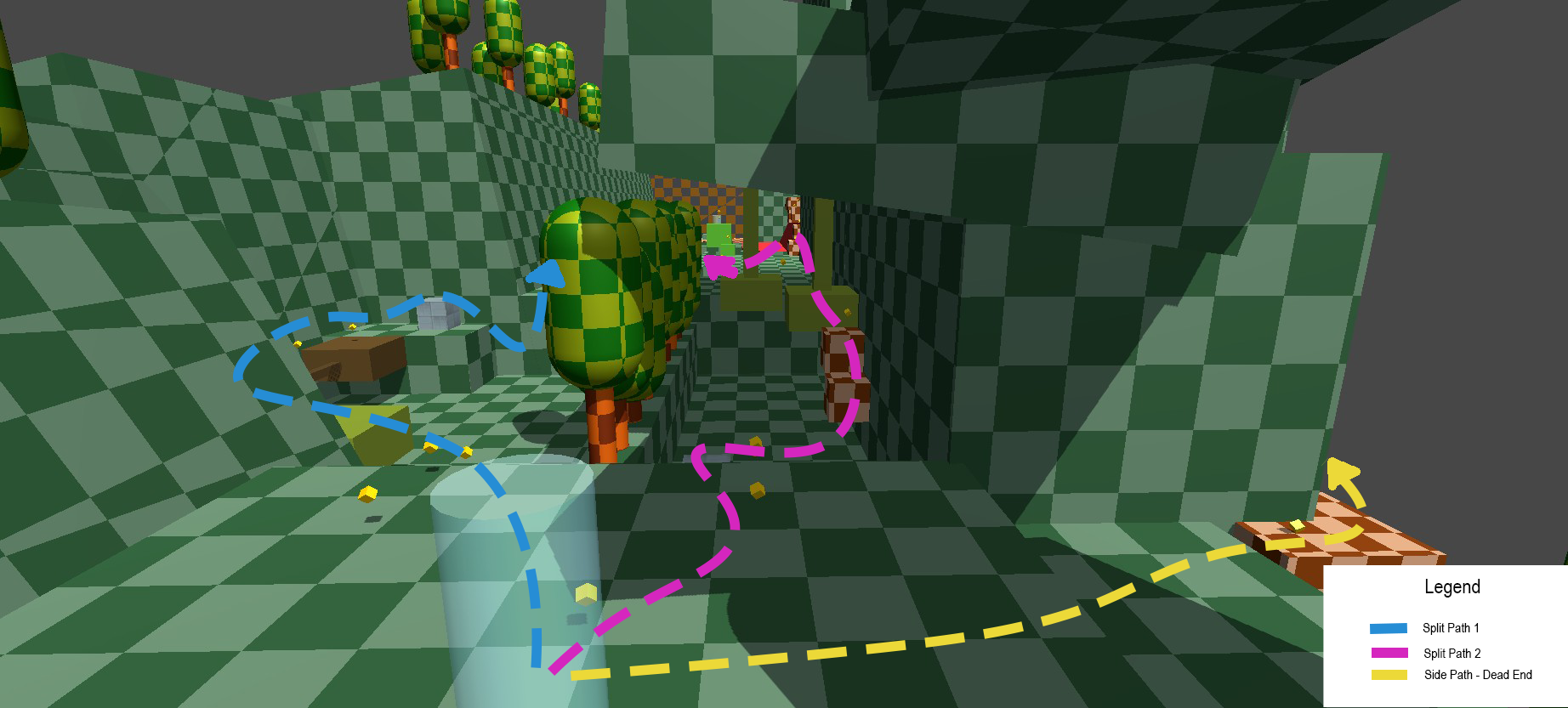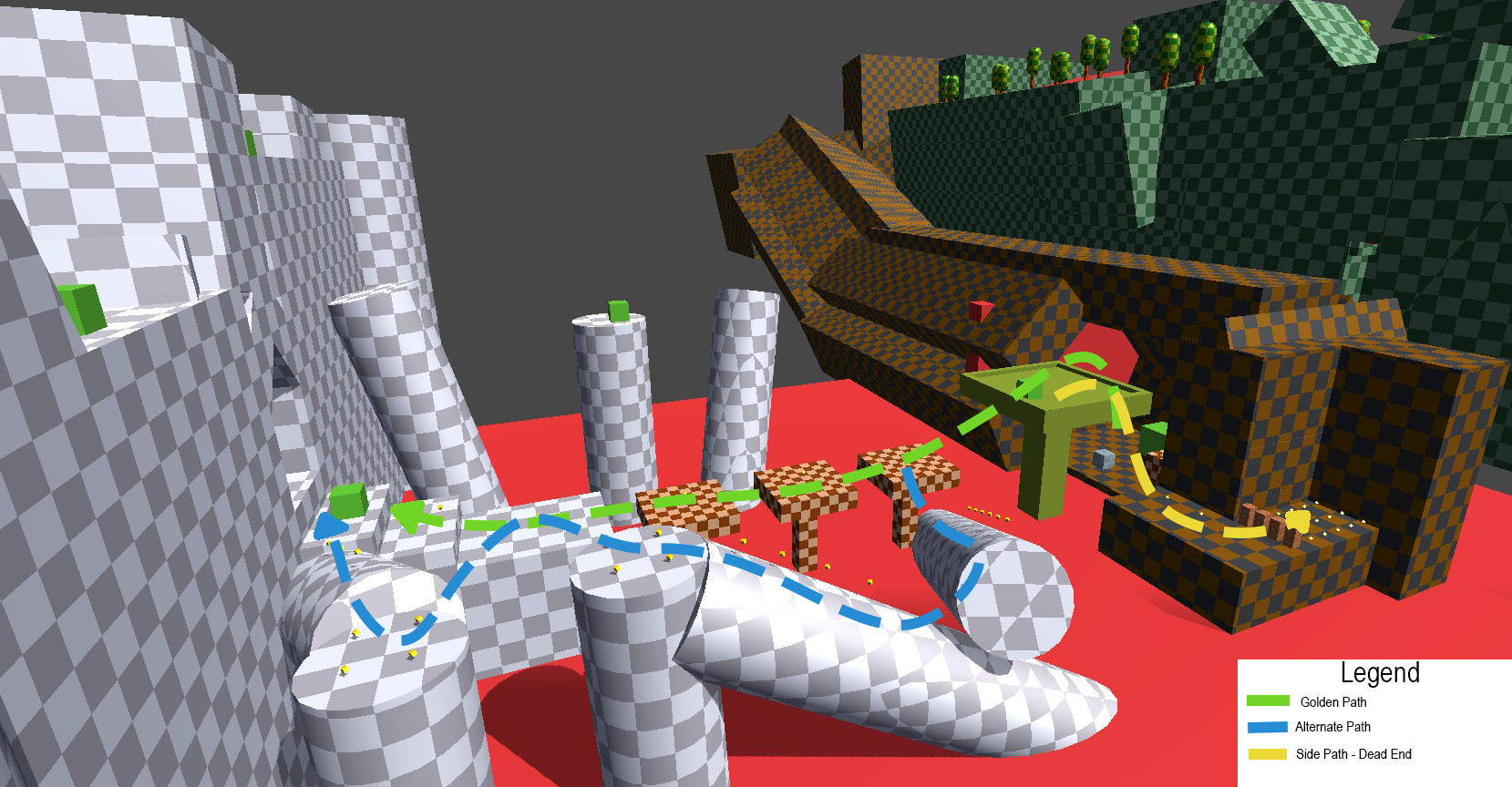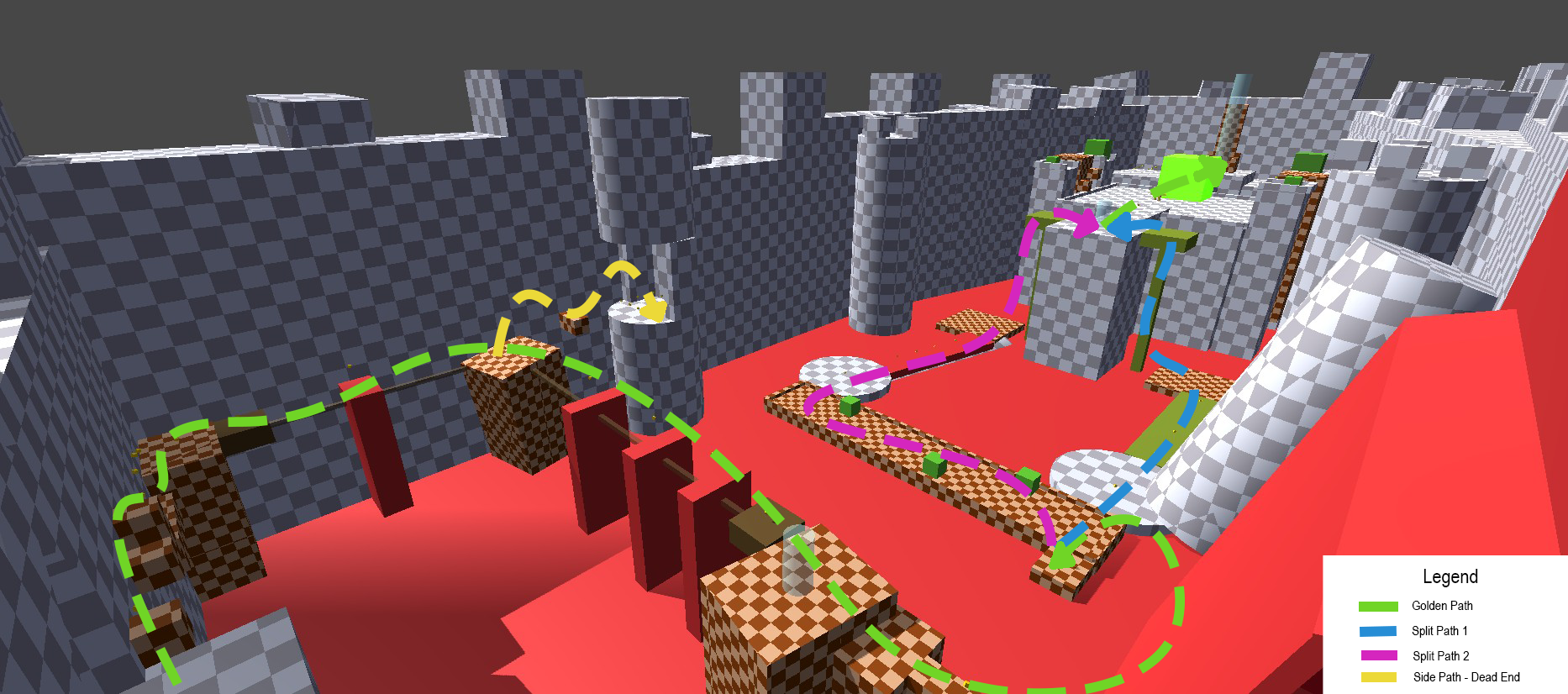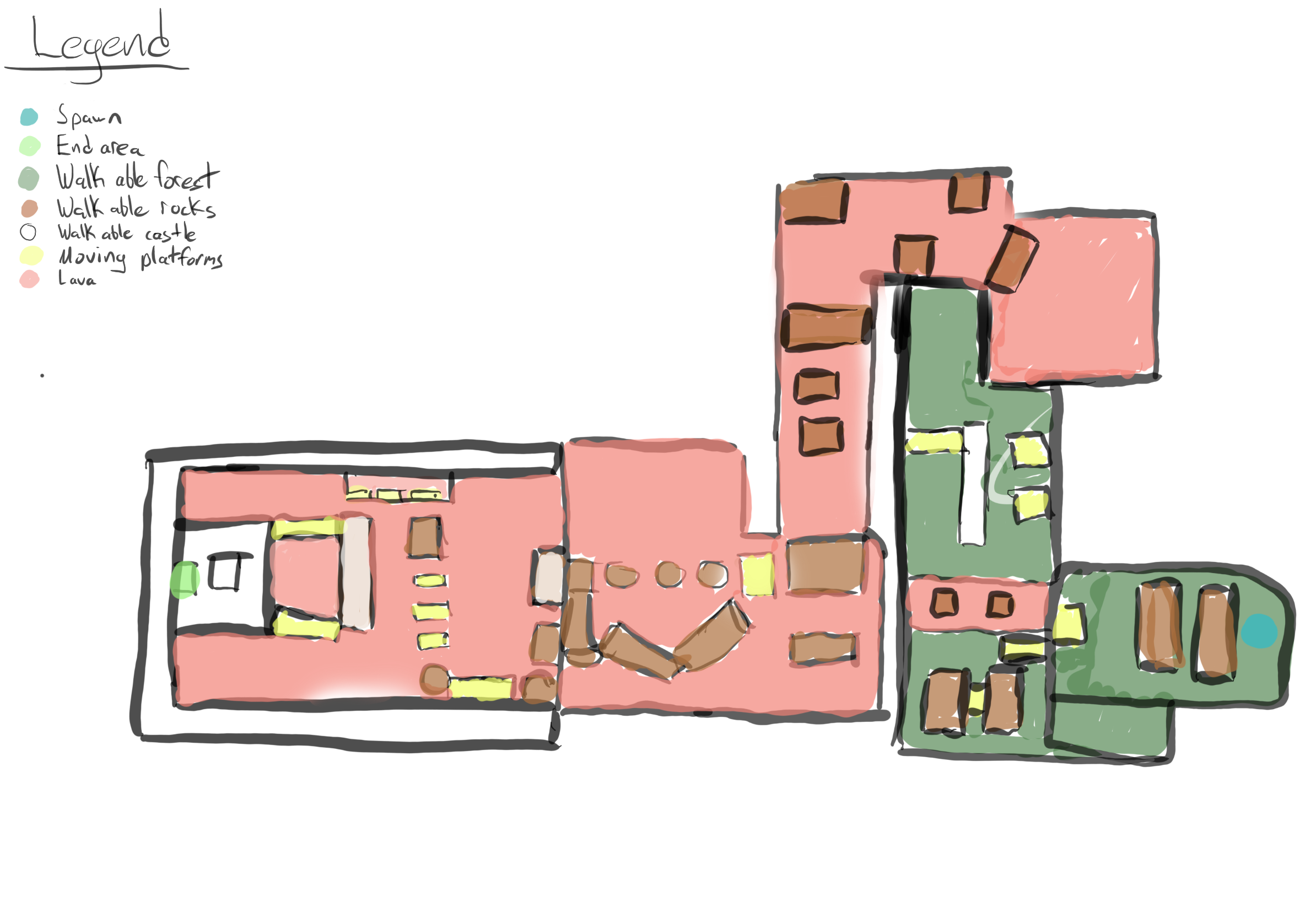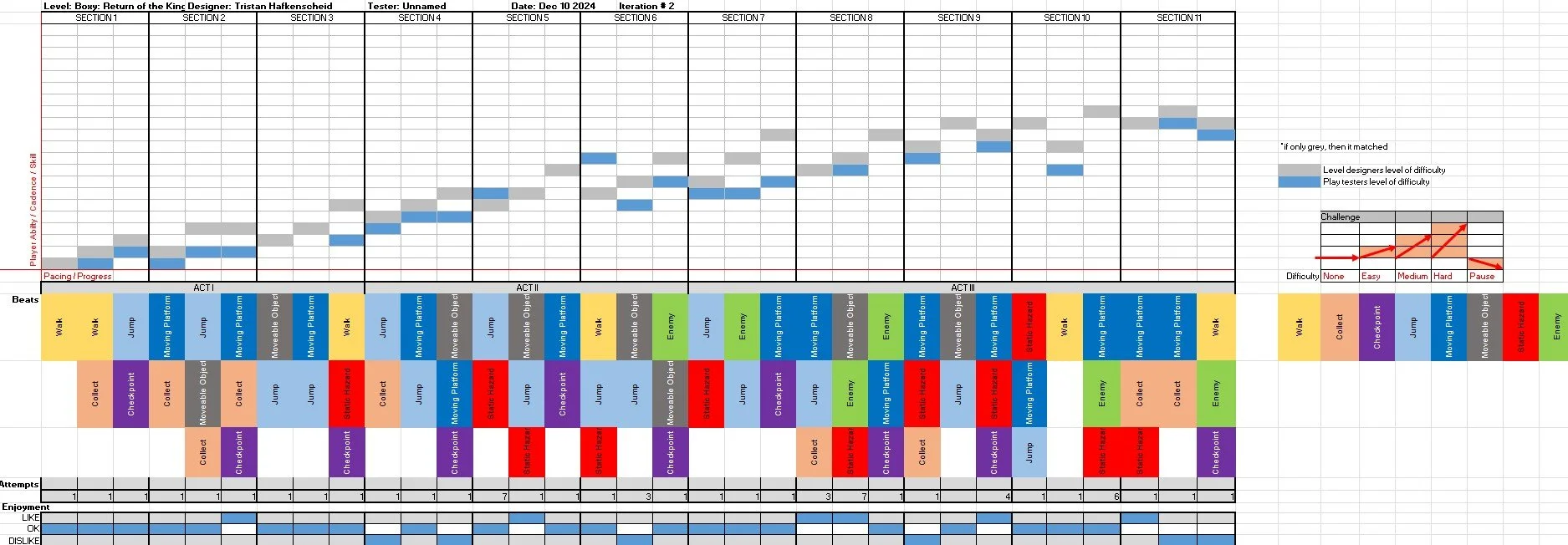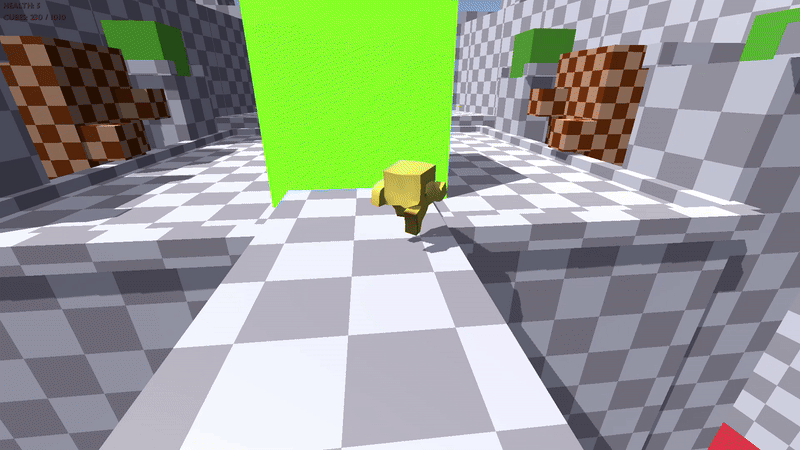Boxy: Return of the King
In Boxy: Return of the King, players take on the role of Boxy, a brave yet charming cube-shaped hero on a quest to reclaim the throne of a fractured kingdom. Set in a whimsical world filled with danger and verticality, players must navigate through challenging environments, outsmart clever platforming puzzles, and defeat mischievous greenies—the game’s primary enemies.
Designed entirely in Unity, this greybox prototype serves as a showcase of my level design abilities, with a focus on spatial composition, pacing, and player flow. Every element, from the layout of the platforms to enemy placement and player objectives, was carefully constructed to create a balanced and engaging gameplay experience. This project highlights my ability to prototype efficiently, guide player movement through visual language, and build worlds that reward curiosity and mastery.
Engine: Unity
Game Type: 3D Platformer
Personal Project
One-person development team
Roles and Responsibilities
Design Documentation
Created a complete Level Design Document outlining mechanics, player abilities, gameplay loops, and environmental storytelling
Included detailed metric breakdowns, level progression flowcharts, and visual reference boards
Level Greyboxing
Designed level layout using Unity’s ProBuilder and greyboxing tools
Defined traversal paths, platform spacing, verticality, and player flow based on Boxy’s movement metrics
Progression & Teach-Test-Challenge Design
Structured gameplay progression using the Teach-Test-Challenge methodology
Walking & Jumping: Introduced via basic platforms and safe spaces
Coins & Collectibles: Placed in rewarding yet reachable locations
Moving Platforms & Hazards: Gradually introduced timing-based movement
Breakable & Movable Boxes: Used as interactive puzzle elements
Lava & Enemies: Layered to escalate tension and difficulty
Enemy Placement & Pacing
Positioned “greenie” enemies to challenge players at key points in their journey
Balanced enemy difficulty and spacing to maintain flow without overwhelming
Item Placement & Level Flow
Placed coins to guide the player and encourage exploration subtly
Used spatial composition and contrast to direct attention to a critical gameplay element
Path Diagrams of Boxy Level
Parti Diagram - Initial Sketch of Zones
Level Design Process
Greyboxing & Blockout
Prototyped the level layout in Unity using ProBuilder
Built in modular chunks, each focused on teaching a specific mechanic
Shifted from open layouts to more guided flow based on playtest feedback
Metrics-Driven Iteration
Defined movement metrics (walk speed, jump height/distance) to inform level spacing
Applied these metrics consistently across traversal, hazards, and enemy placement
Supported design with a Level Design Document and layout diagrams
Teach-Test-Challenge Structure
Walking & Jumping: From flat paths → basic jumps → moving platforms
Coins: Used for guiding paths and rewarding exploration
Breakable & Movable Boxes: Introduced in safe zones, later layered with hazards
Lava & Enemies: Built tension through gradual integration and combo challenges
Gameplay Element Integration
Strategically placed interactables and hazards to support pacing
Designed sections that layered mechanics progressively
Used visual contrast and spacing to signal key gameplay moments
Playtesting & Refinement
Ran multiple rounds of testing to evaluate the flow and difficulty
Made iterative adjustments to spacing, pacing, and enemy layout
Side path with rewards for exploration
Flow Chart of the Level
Flow chart shows the expected progress and skill, mapped out per beat. This was recorded during a playtest to see the difference between my expected flow and the flow experience from the play tester. Beat types were spaced out in order of difficulty with a “teach, test, challenge” methodology in mind.
Final boss challenges player as they must use their walk, jump, and enemy damaging skills to beat boss
Boat moving platform used for a down beat as they enter new area
Challenges
The level design process for Boxy: Return of the King began with greyboxing the entire layout using Unity’s ProBuilder tools. I focused on defining the core structure of the world early on—establishing platform spacing, player flow, and key gameplay beats tied to Boxy’s movement metrics.
One of the biggest challenges came from the mid-level sections. During early iterations, I unintentionally made these areas too difficult, especially when testing new mechanics like moving platforms, breakable boxes, and enemy encounters. The spike in difficulty created friction for players, breaking the intended flow and causing frustration during playtests.
Balancing difficulty became a key design goal. I struggled to find the right progression between “too easy” and “too punishing,” especially when layering mechanics. To solve this, I took a step back and embraced a more methodical approach—starting with the simplest form of each mechanic and slowly scaling its complexity.
Through regular playtests and focused feedback sessions, I iterated on each chunk of the level. I used the Teach-Test-Challenge methodology to guide players naturally, building confidence before introducing multi-step challenges. This process not only improved the pacing but also helped maintain an engaging and rewarding difficulty curve throughout the entire experience.
